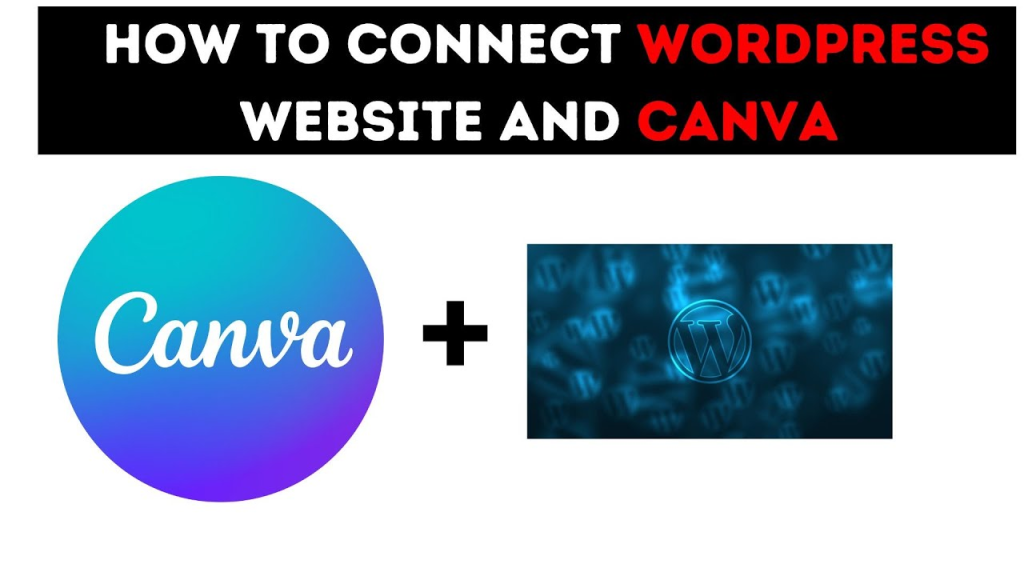Integrating design platform Canva with content management system WordPress combines visual graphic creation and publishing capabilities. This guide details the process of connecting accounts, accessing templates, embedding graphics, and optimizing performance.
Canva and WordPress Integration
Canva’s drag-and-drop editor simplifies graphic design. WordPress powers over 40% of sites with robust content tools. Together they enable anyone to make and publish quality images easily.
You’ll learn to install the Canva plugin, sync accounts, leverage customizable templates, embed graphics, and optimize for web.
Step 1: Installing the Canva Plugin

Find the Canva plugin in the WordPress directory and download. Log in as admin and go to Plugins > Add New. Click Upload Plugin, choose the zip file and install. Activate the plugin.
Step 2: Connecting Canva and WordPress Accounts

From the WordPress editor click the Canva icon. Sign in with Canva account credentials. This connects the platforms, enabling WordPress to access Canva.
Optionally map Canva team roles like Editor and Viewer to equivalent WordPress roles. This syncs permissions.
Step 3: Accessing Canva Designs in WordPress

The plugin lets you browse Canva templates suited for WordPress sites. Search categories like social media graphics, presentations, posters and more.
Activate WordPress sizing presets for posts, pages, widgets. Designs export at ideal web resolutions for embedding.
Edit colors, fonts, effects in Canva’s editor directly from within WordPress before exporting.
Step 4: Publishing Canva Graphics to WordPress

Upload finished Canva exports like JPG, PNG to WordPress media library. Insert into content using Add Media.
Alternatively, embed codes generated from Canva link graphics to pages and posts.
The plugin also automatically sets Canva images as featured images for social media previews. Here’s an example from OnlySweeps:

Step 5: Resizing and Optimizing Graphics

Properly sized graphics ensure fast load times on all devices. For web, under 1MB is recommended.
Use compression tools like TinyPNG to reduce file size without perceptible quality loss. This typically achieves 60-80% compression.
Include alt text descriptions for non-text elements. This enhances accessibility and SEO.
Step 6: Utilizing Canva on Mobile Devices

The Canva app for iOS and Android enables designing on-the-go. Sync Canva projects across devices with WordPress for multi-platform creation.
Shoot photos on phone, refine into graphics on tablet, export through WordPress on desktop at publishing resolutions. Streamlined workflow.
Canva Enters Website Builder Space
Recently Canva launched a website builder integrating many WordPress features natively for publishing. This aims to compete with platforms like Wix and Squarespace.
For publishers invested in WordPress infrastructure, the plugin route likely still delivers the most customizable solution. But Canva sites may appeal for their speed and visual focus.
As adoption grows, implications for professional WordPress designers could shift. Streamlining visual content with Canva is a trend to watch.
Additional Tips and Resources
- Use Canva’s free tutorials to develop graphic design skills for beginners.
- Premium WordPress plugins like WP Canvas provide added functionality like team collaboration tools.
- Beyond WordPress, connect Canva to other platforms like Shopify for graphics integrated with ecommerce.
Recap and Conclusion
Integrating Canva’s graphic creation capabilities with WordPress combines intuitive visual tools and content management power.
Installing the plugin to sync accounts provides access to an abundance of templates for effortless quality graphics. Embed or feature these visuals seamlessly on sites and blogs.
With over two billion designs created per year on Canva, it’s clear this integration delivers graphics solutions needed for modern web publishing.






